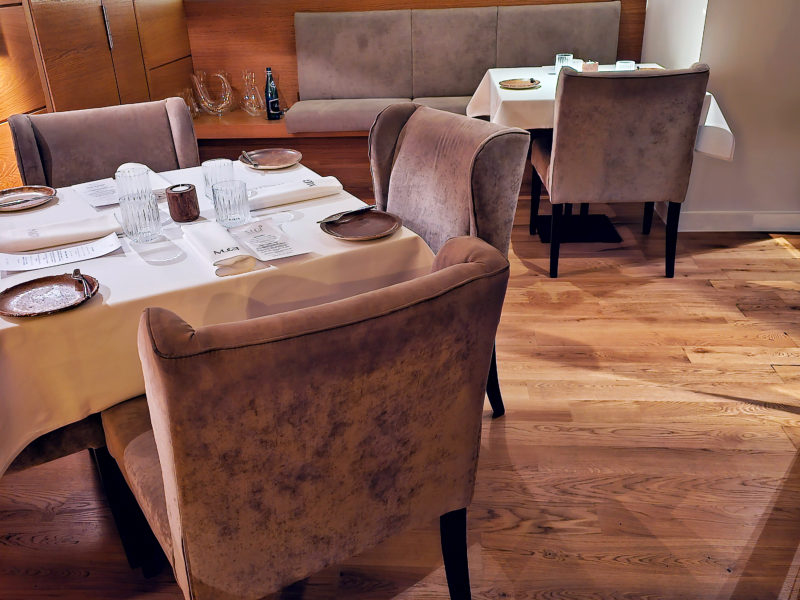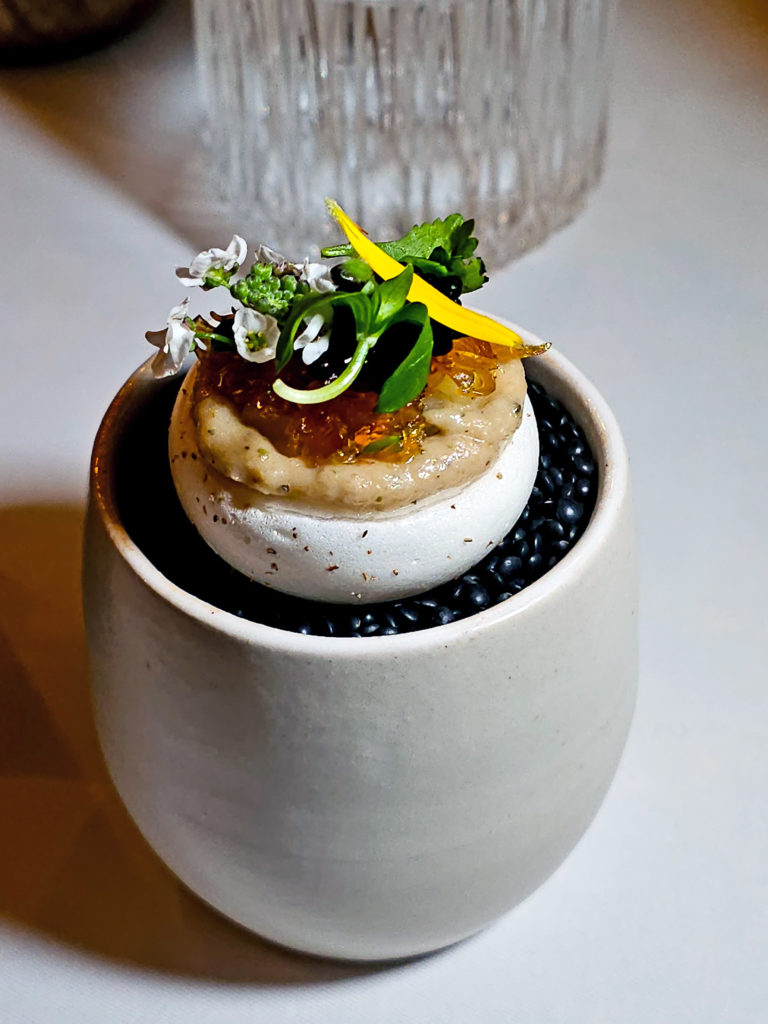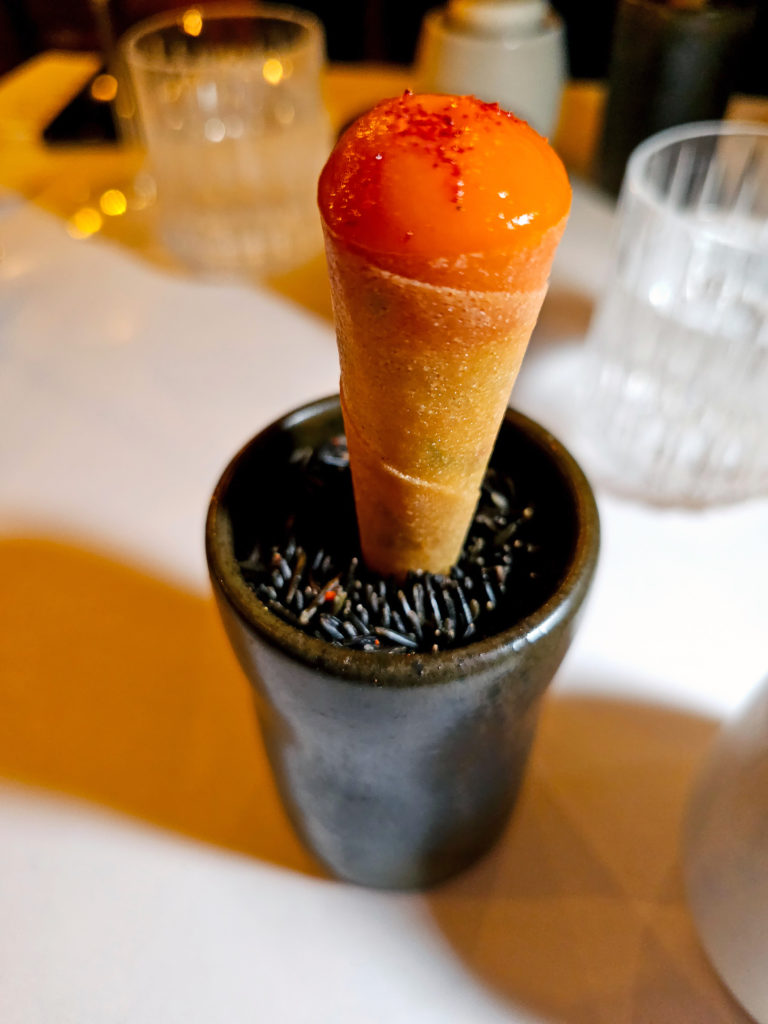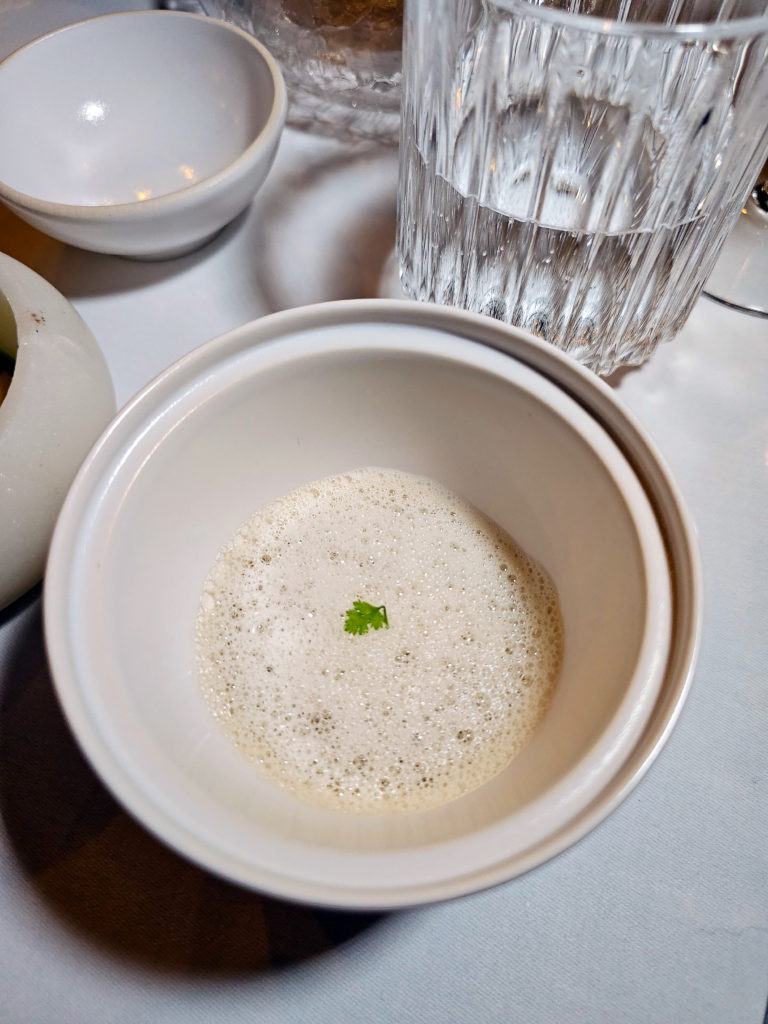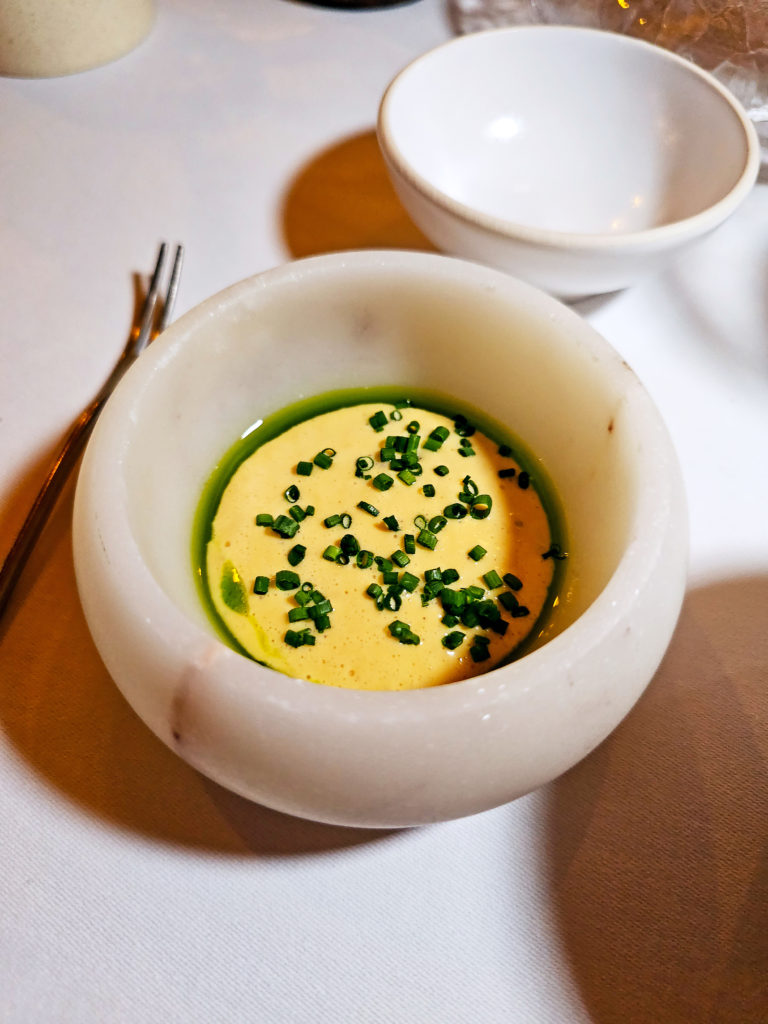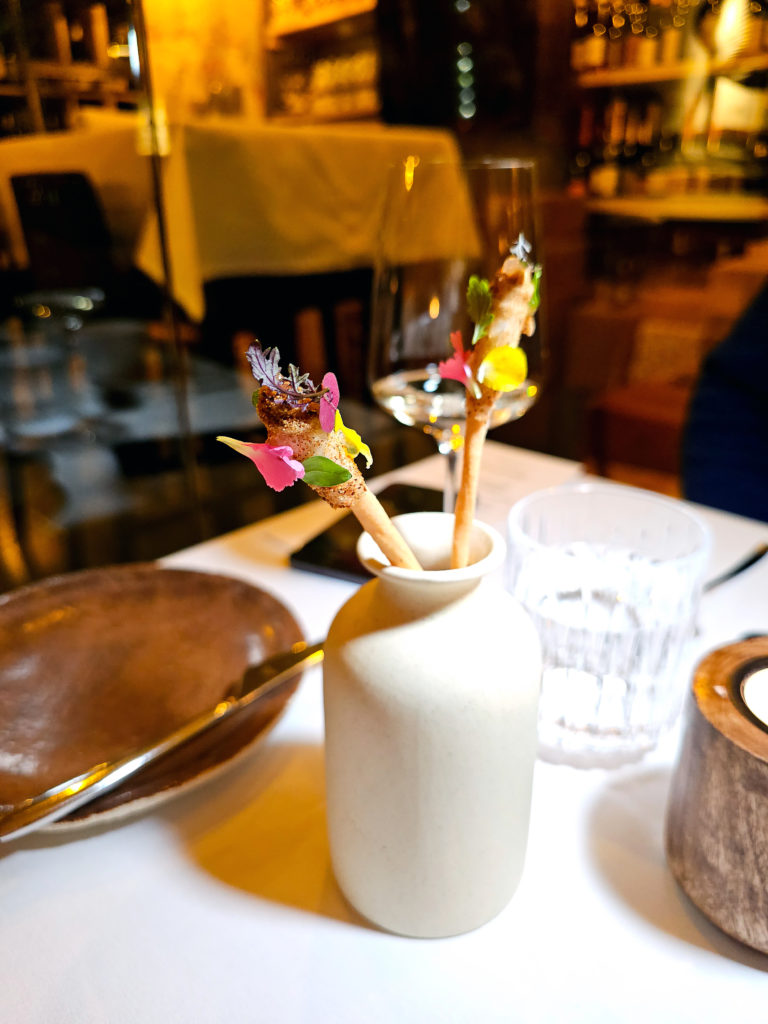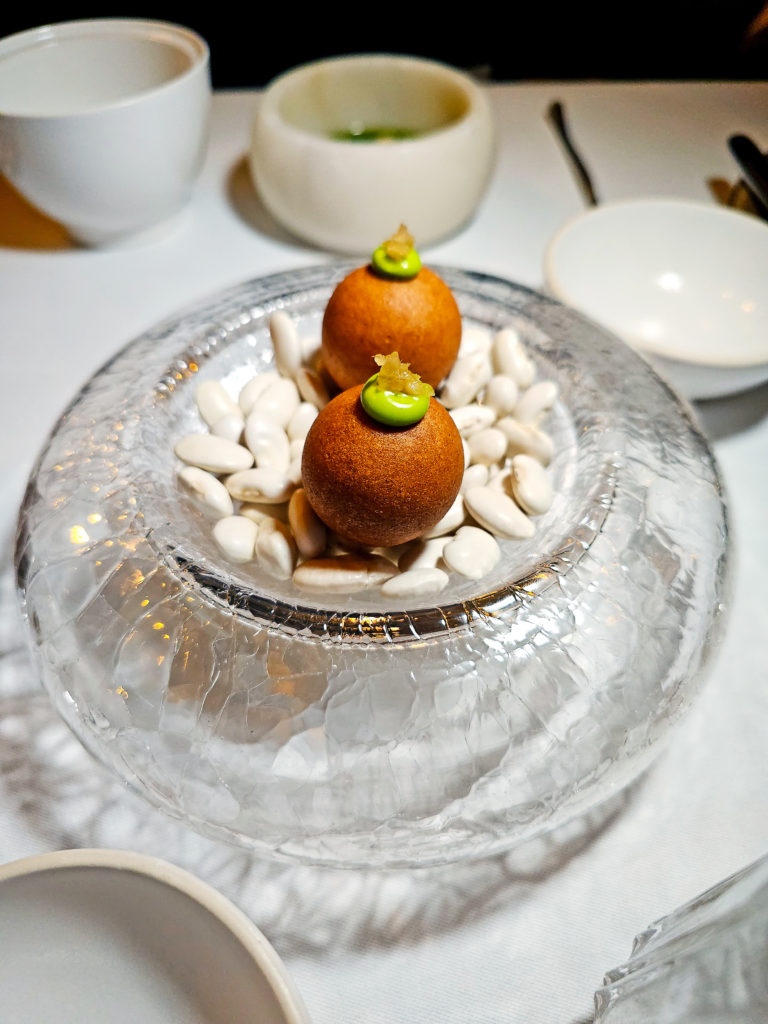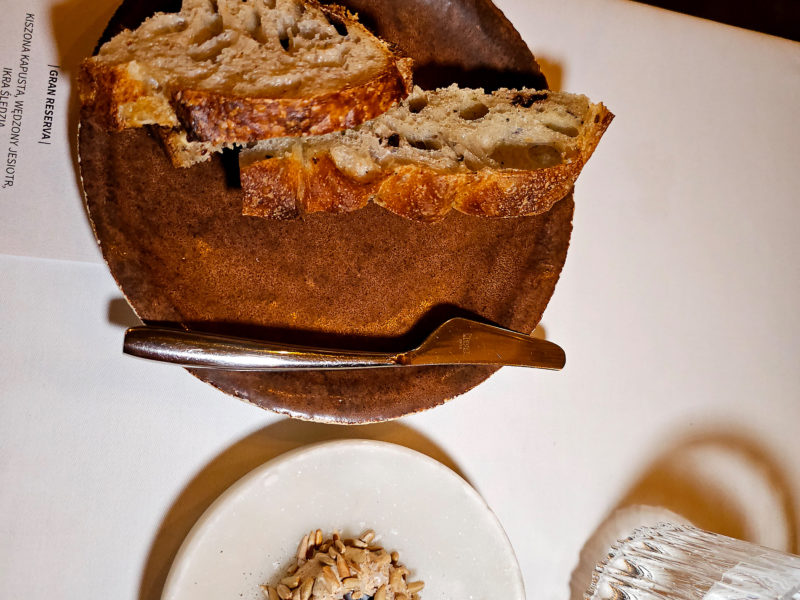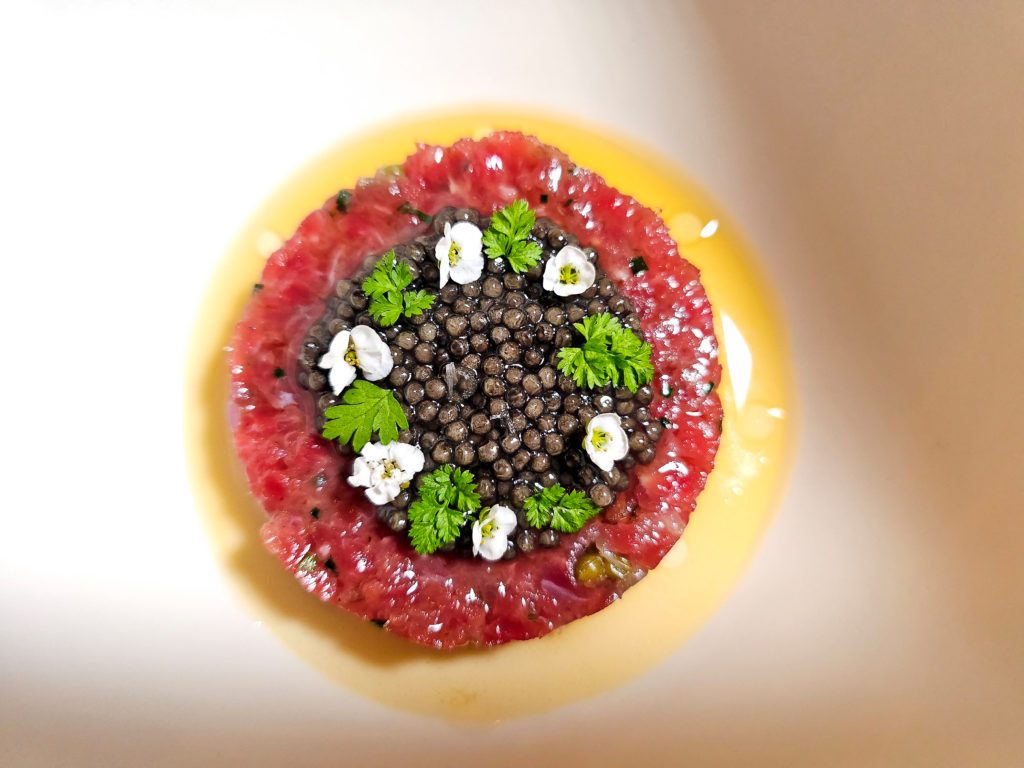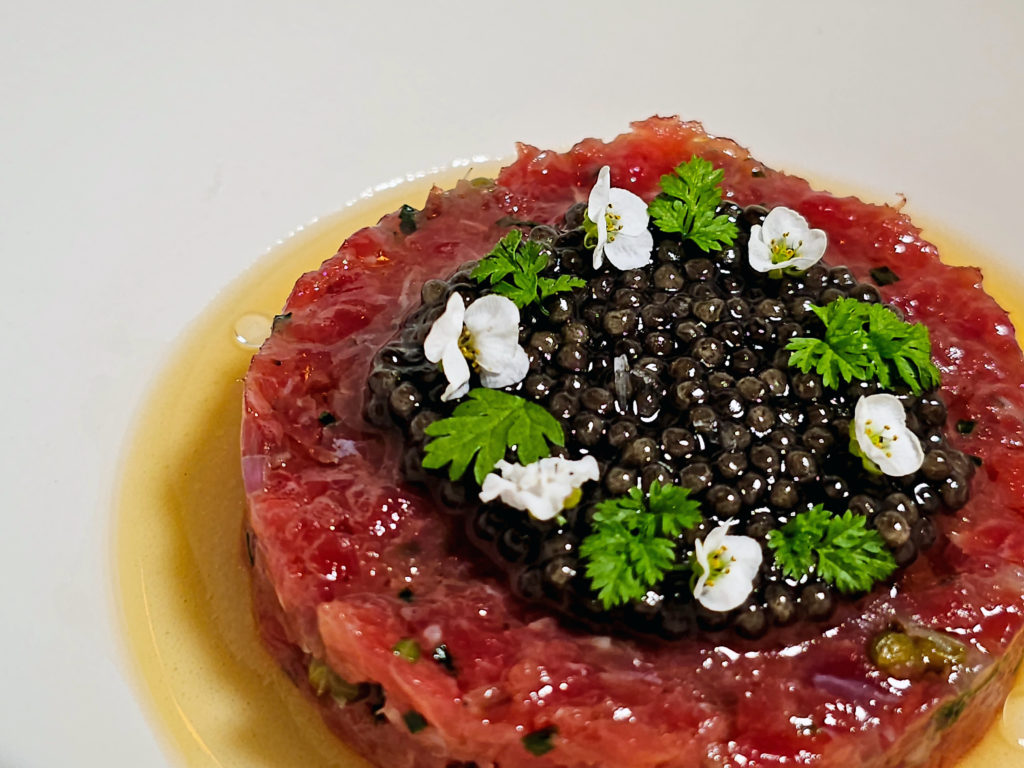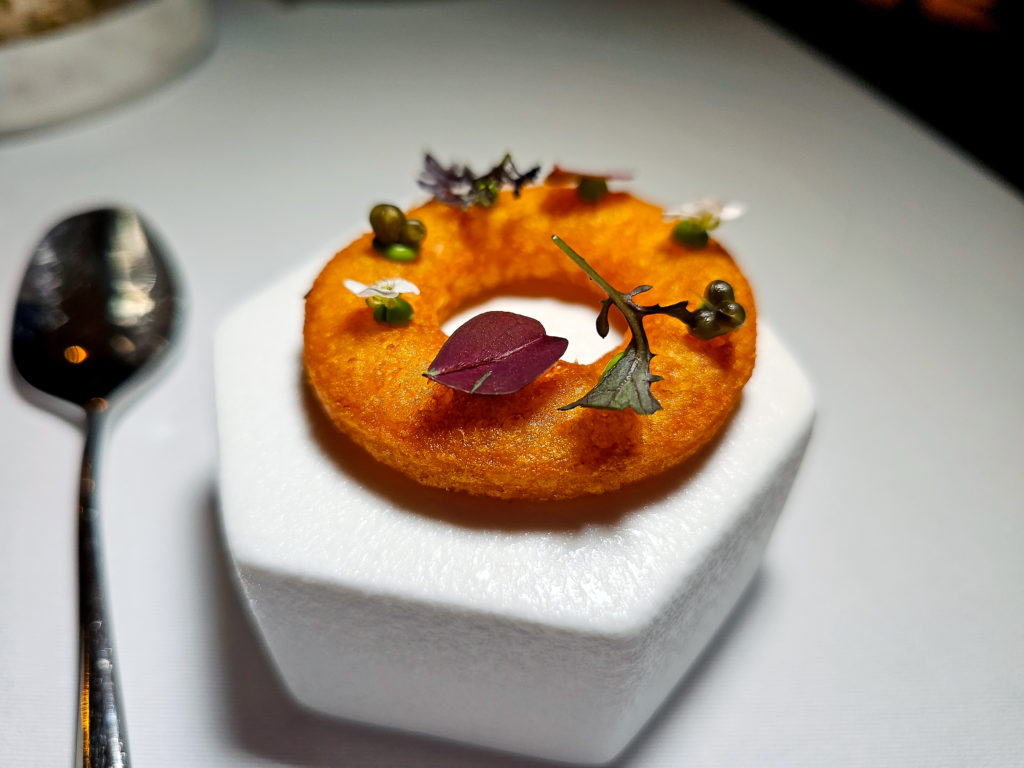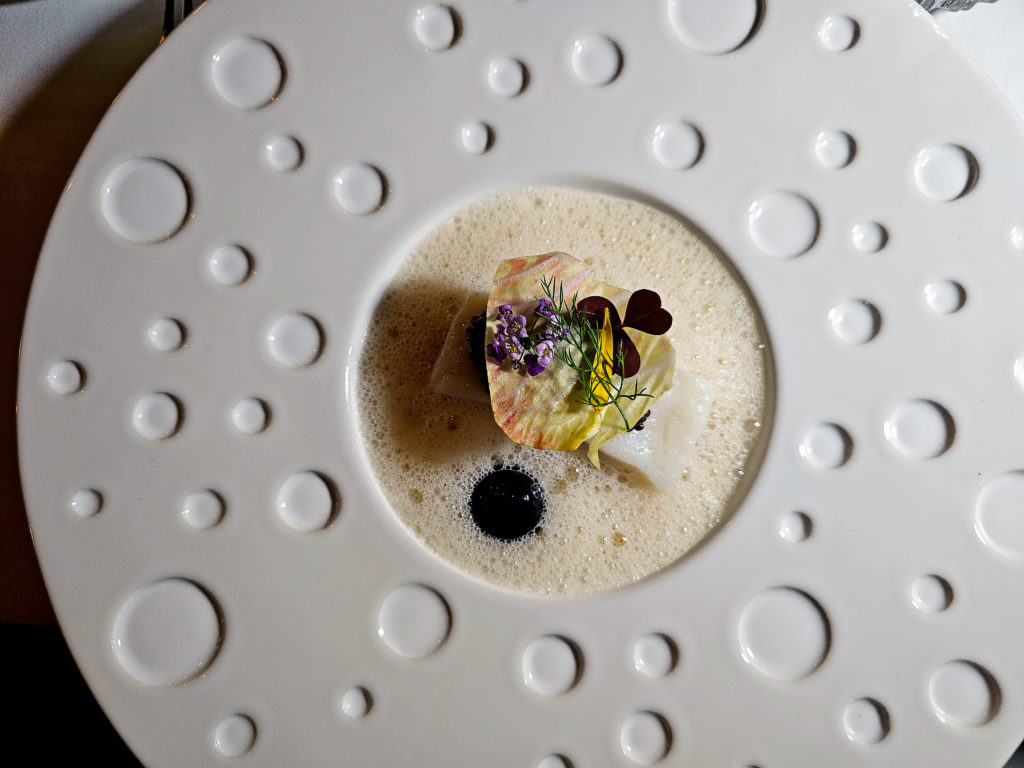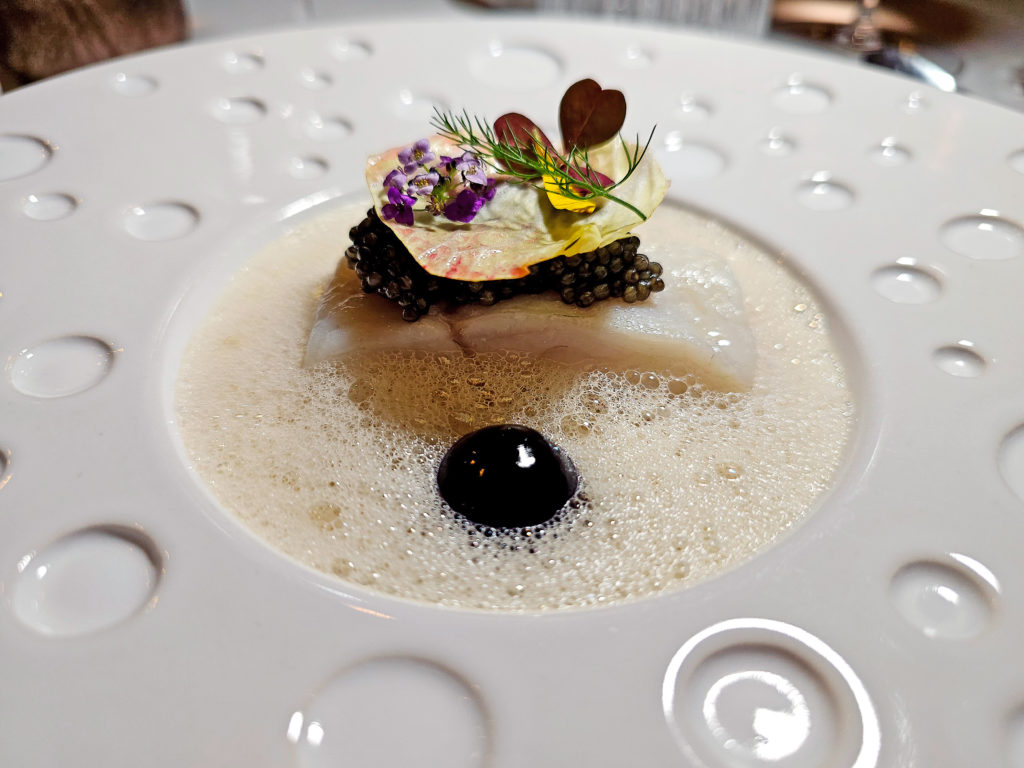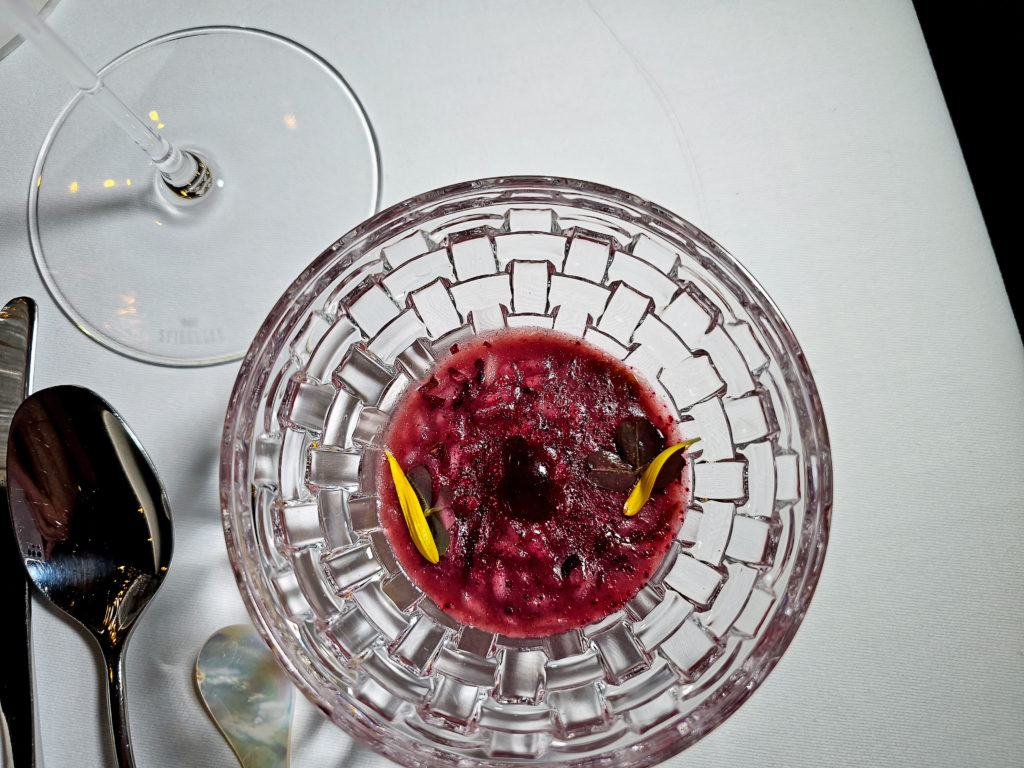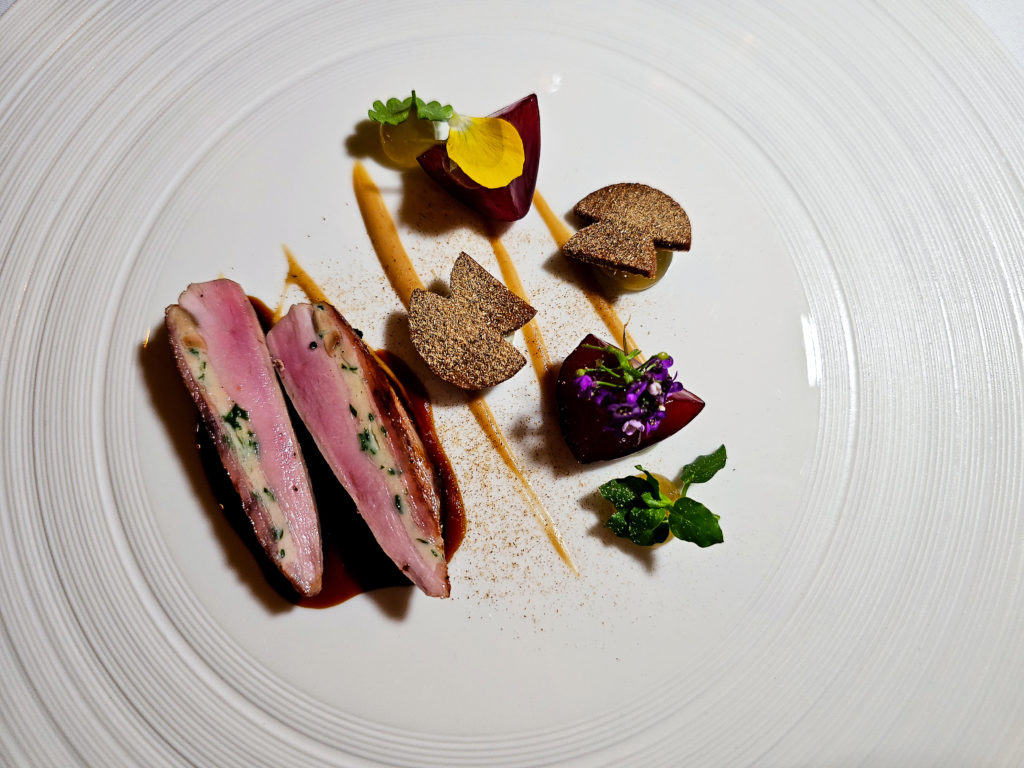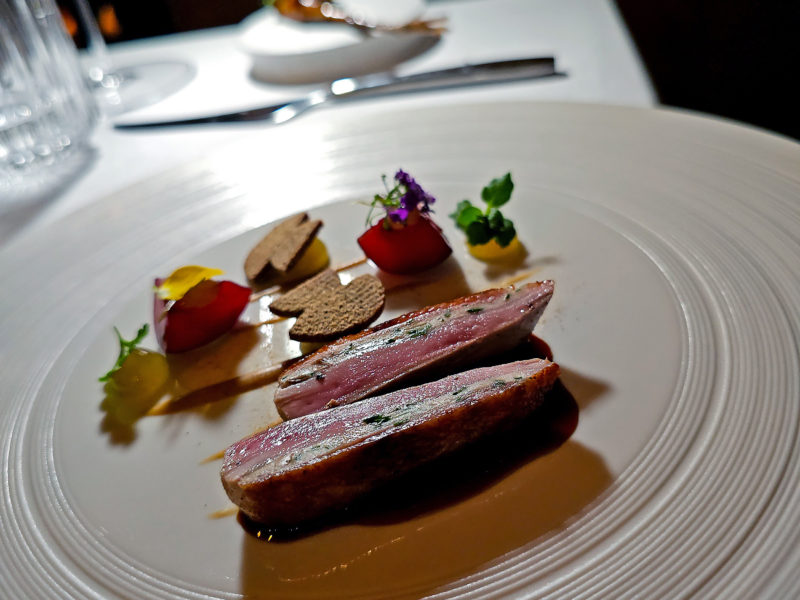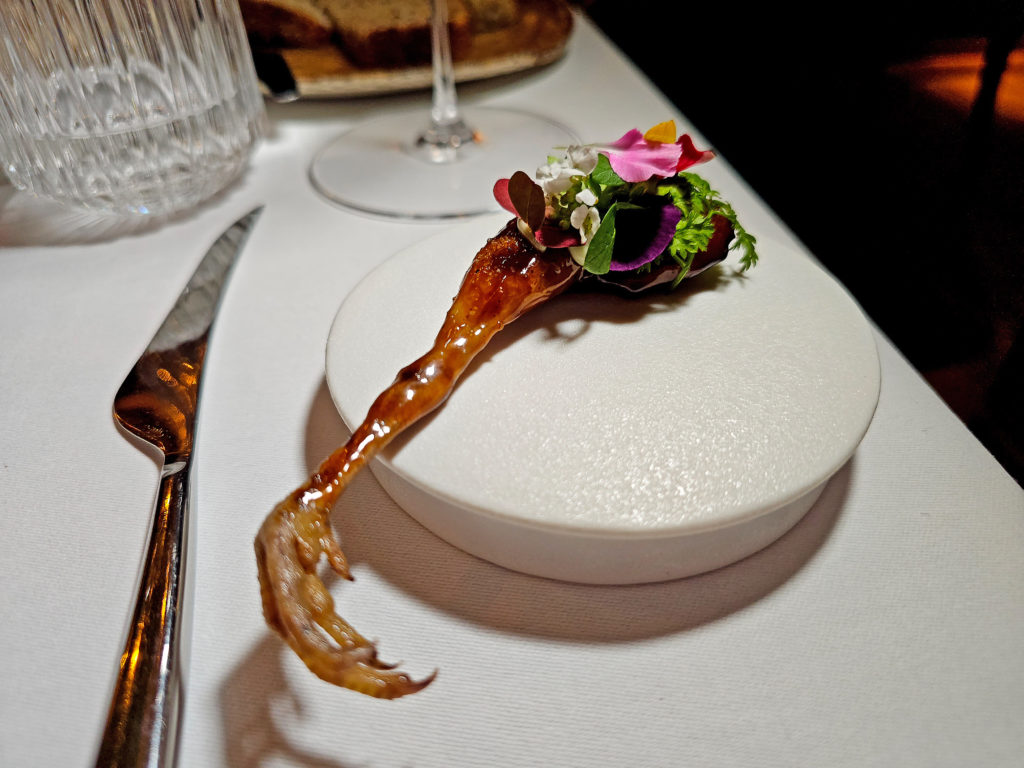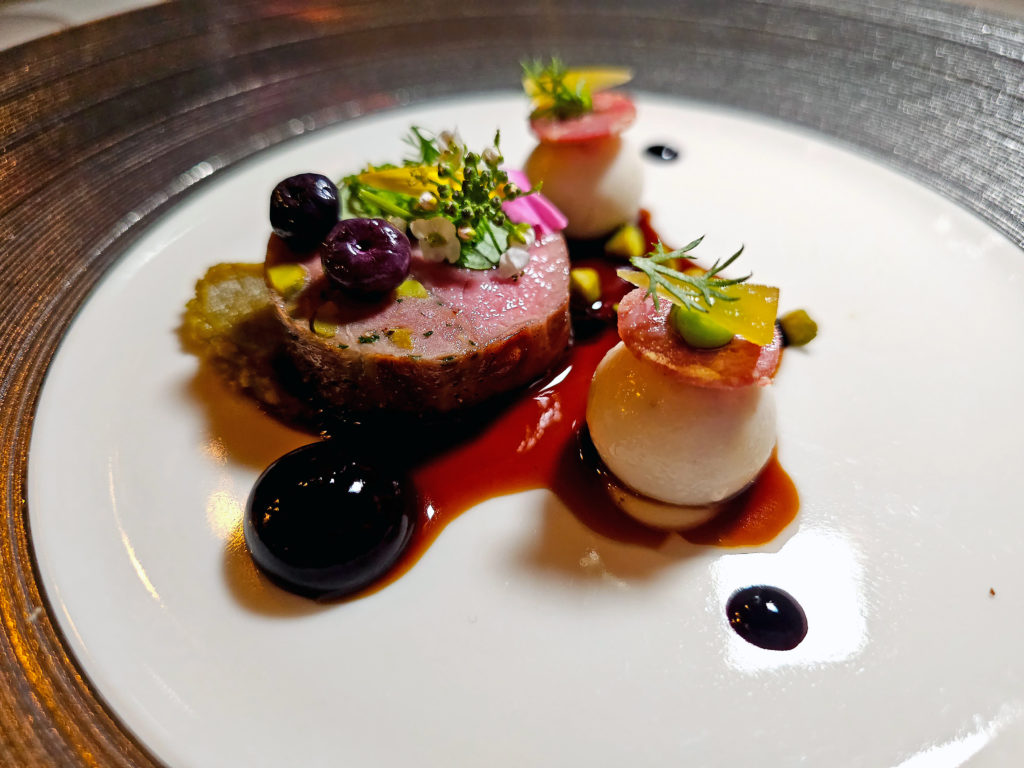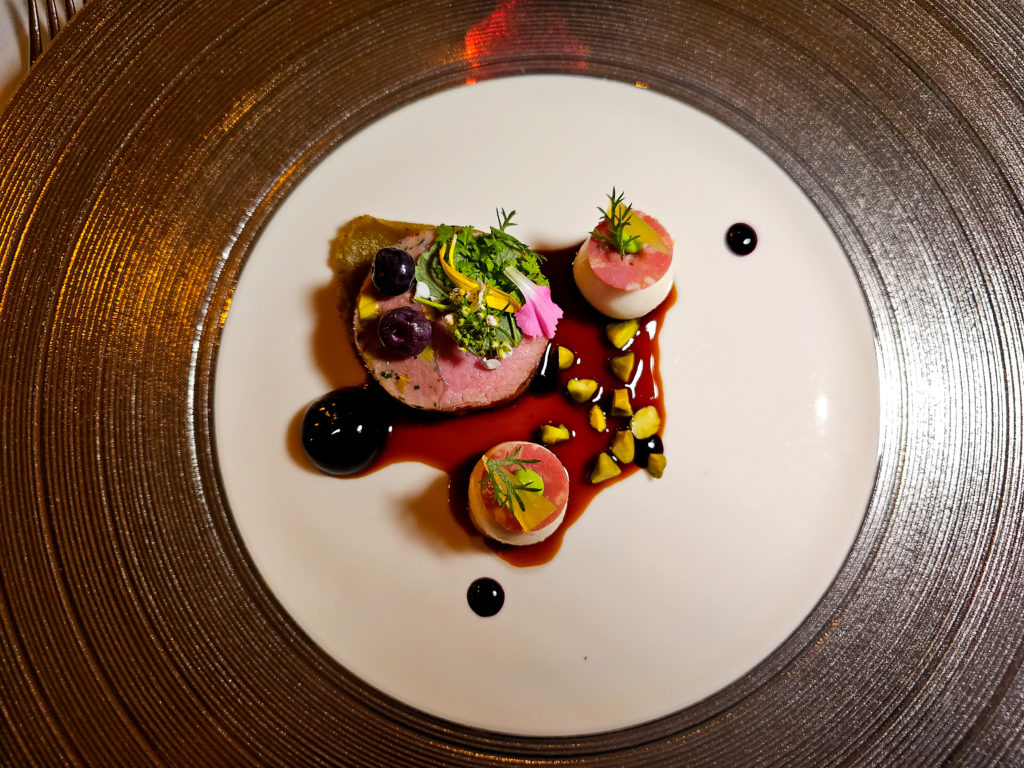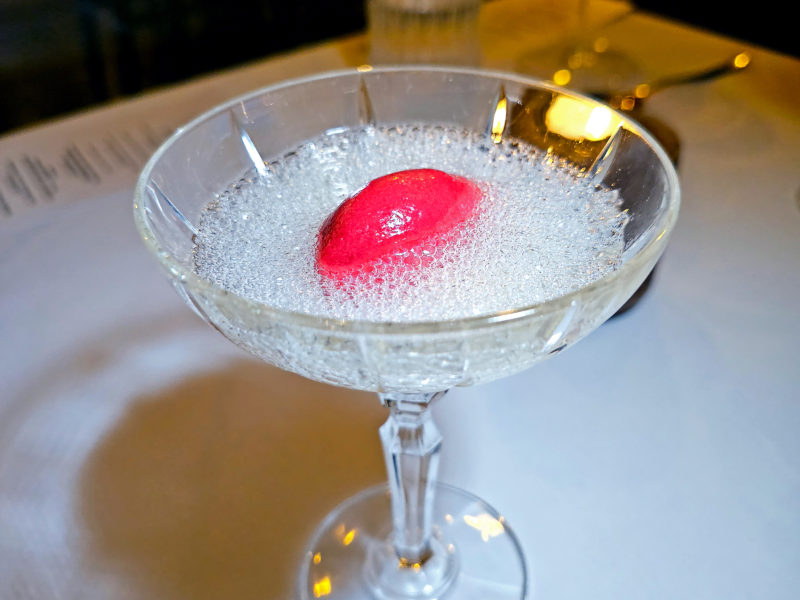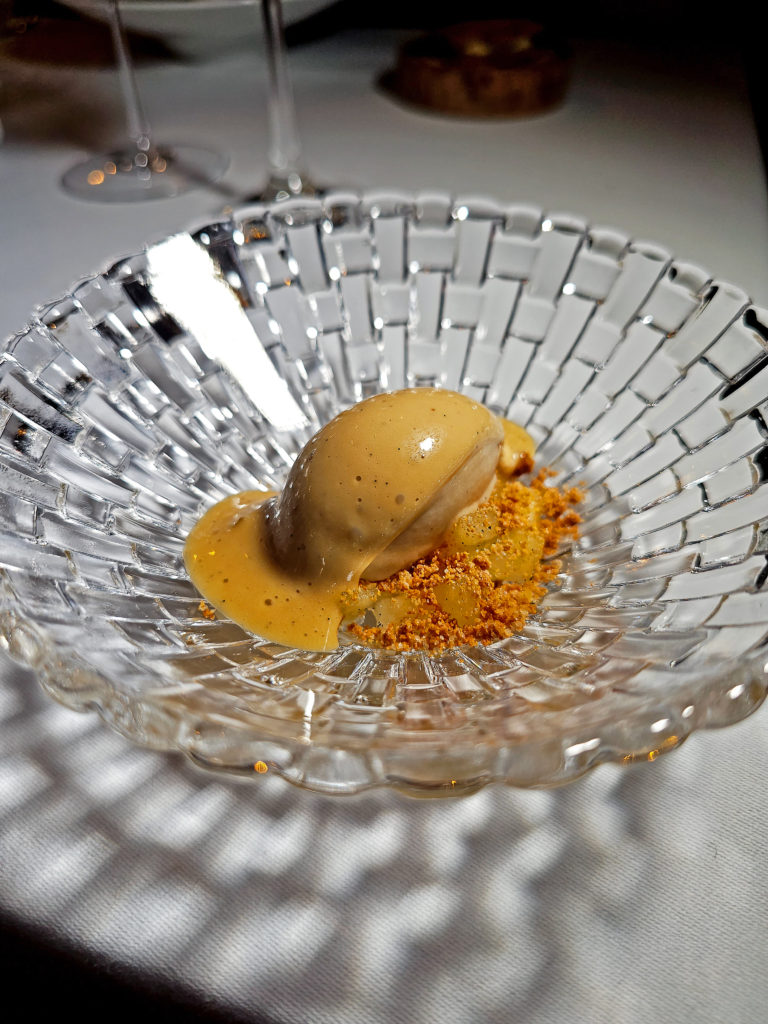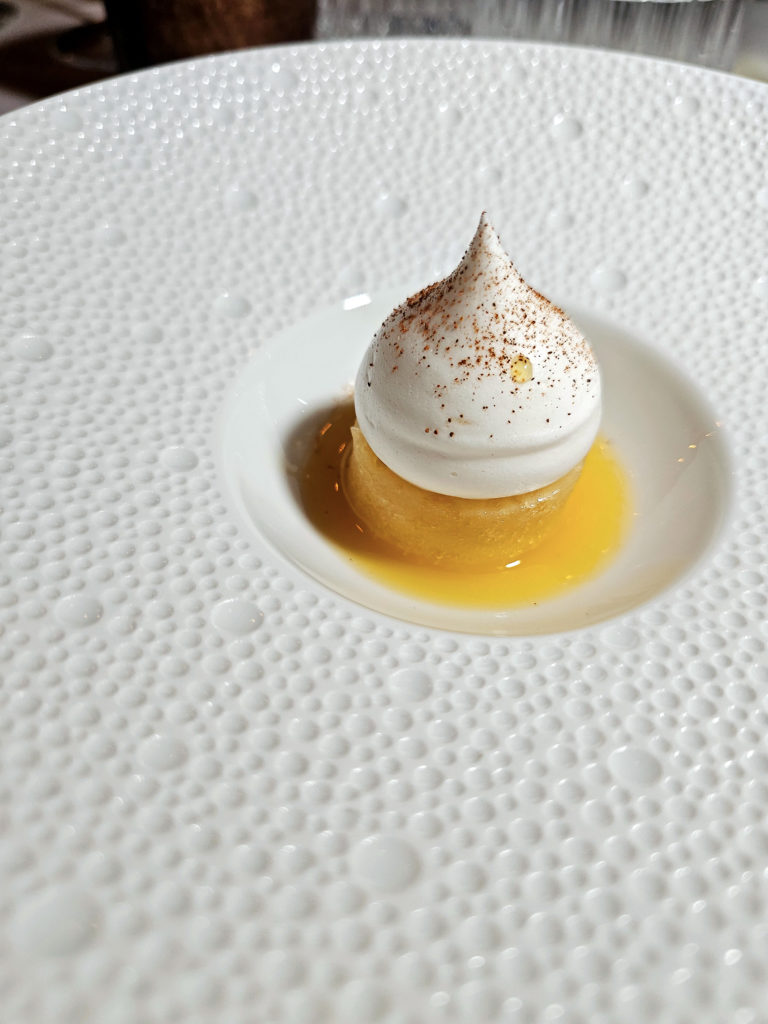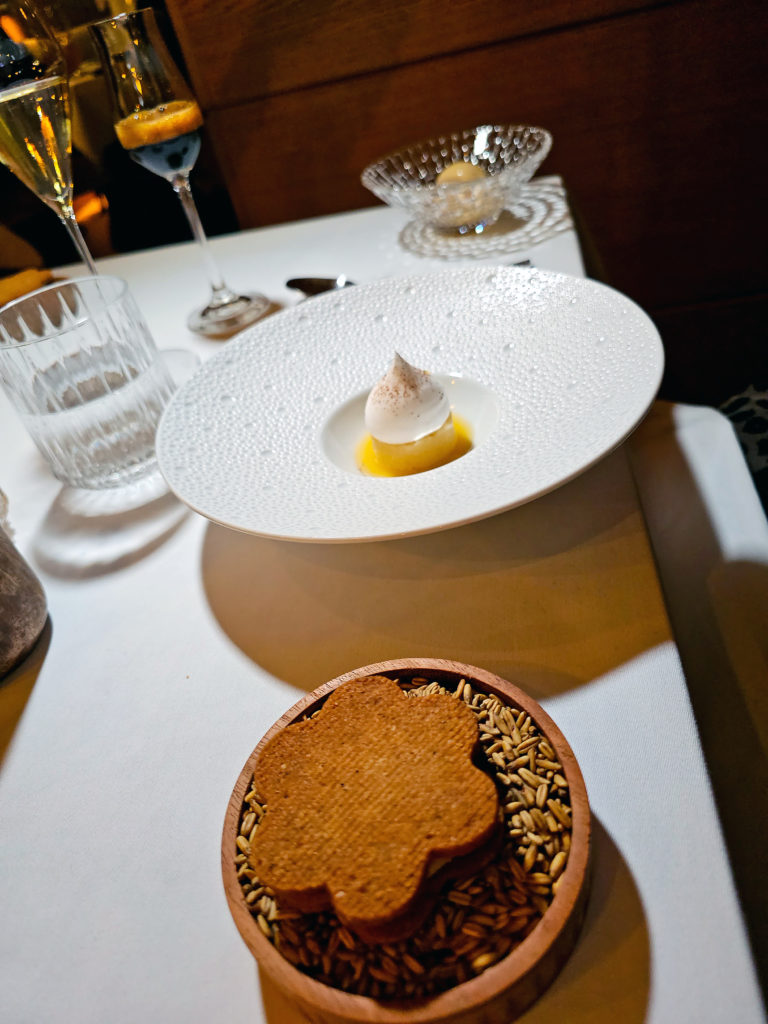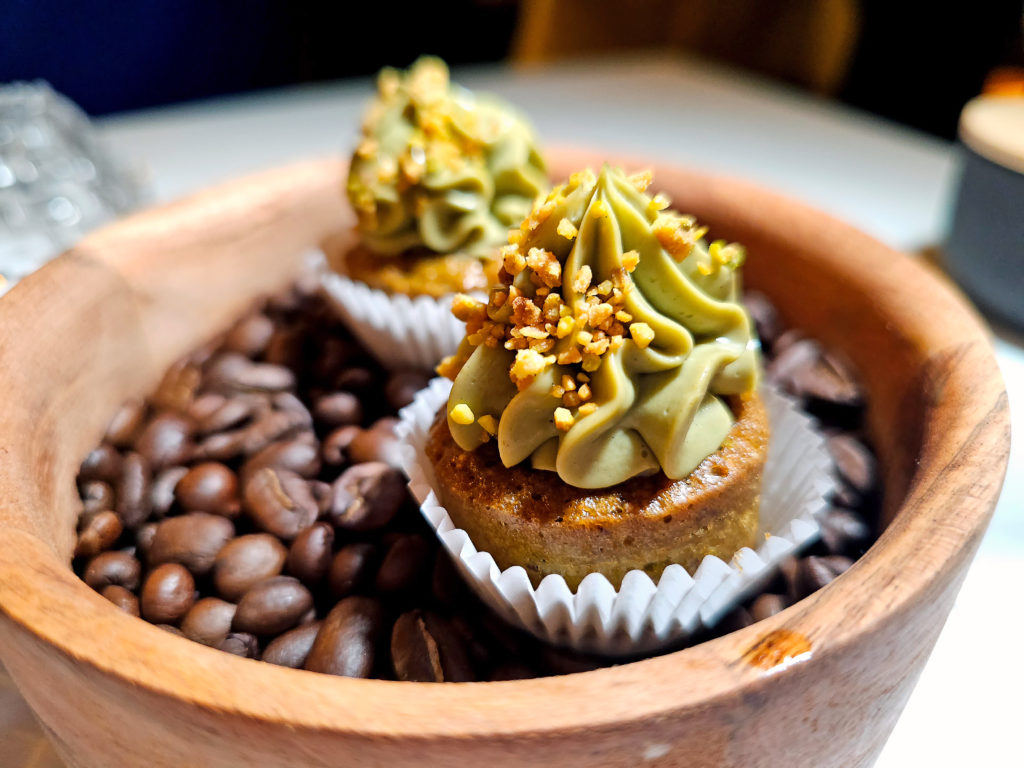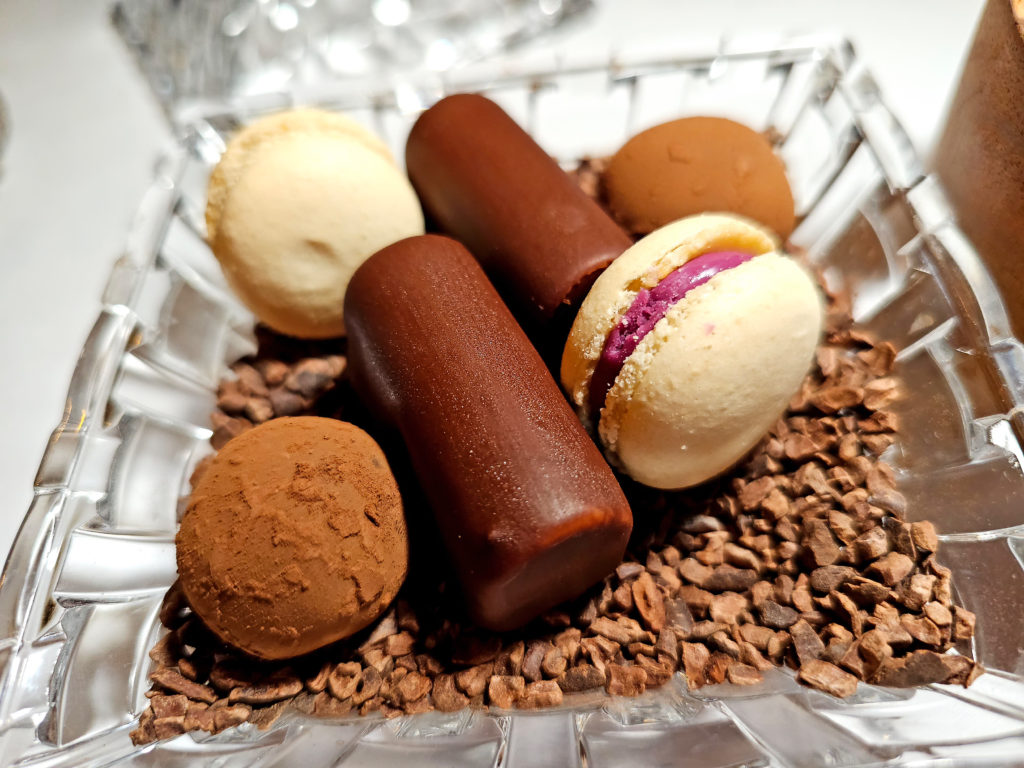We visited Muga at the end of 2024. The moment we stepped inside, it was clear that culinary art is taken very seriously here. Since 2023 it has been the only restaurant in Poznań with a Michelin star, and its elegantly lit dining room hints at an evening polished in every detail. Chef Artur Skotarczyk, trained at the legendary Institut Paul Bocuse in Lyon and formerly of Le Pergolèse in Paris, reveals the kitchen’s secrets. French precision meets Greater Poland seasonality, so every plate looks refined while staying rooted in local produce.
From the bright, neutral interior you can see whole walls of wine stacked in geometric racks – part of the in-house Casa de Vinos shop, accessible directly from the dining room. The shop is run by the restaurant’s owner, Klaudiusz Kawicki, whose deep knowledge ensures even the most demanding guests leave with the perfect bottle.
Once seated, we were wrapped in the warm glow of pendant lamps, the softness of beige chairs and pristine white tablecloths – an ideal stage for a long tasting. We chose the 12-course signature Gran Reserva menu, accompanied by an excellent wine pairing that complemented every dish.
The meal opens with a duo of amuse-bouche. A crisp meringue made from lightly fermented cabbage is filled with an airy smoked-sturgeon mousse and a soft onion cream, its top finished with a few glistening herring-roe pearls. The cabbage’s gentle acidity never overwhelms the fish’s subtle smokiness or the onion’s sweetness. Beside it sits a miniature crunchy cone packed with meagre ceviche, sweet-potato and mango mousses – the tropical mango and cool, citrus-tinged ceviche refresh the palate. A small touch – warm towels scented with rose-petal water – signals that the service will stay one step ahead all evening.
Moments later comes a velvety artichoke cream. A light Parmigiano Reggiano foam floats on top, while a grissino wrapped in lardo di Colonnata adds welcome salt, crunch and richness. Served on the side, a ponzu espuma brings an aromatic lift. A golden doughnut filled with finely minced beef rounds out the course with a hint of gentle sweetness, foreshadowing heartier dishes to come.
Before the next plates arrive, the bread service steals the spotlight. Thick slices of seeded sourdough and olive focaccia land on the table alongside butter blended with fermented black garlic, a cabernet-sauvignon vinegar–shallot reduction, and crunchy sunflower seeds. The bread is supple and gently tangy; the butter surprises with a sweet-smoky finish, while the reduction adds a fruity vinegar note – simply outstanding.
Next came a tartare of dry-aged bavette. The beef was shaped into a ring beneath which lay a delicate smoked-eel mousse, while a glossy mound of black caviar gleamed at the centre. A thin, amber jelly made from oxtail reduction set the structure, and a scatter of tiny white blossoms and chervil leaves added a fresh herbal lift. The marriage of beef with marine accents sang: the eel mousse lent remarkable creaminess and salinity. On the side sat a crisp pomme dauphine – a flat disc of choux-and-potato dough – finished with wild-garlic mayonnaise.
After the tartare, the fish course arrived – a beautiful, juicy fillet of brill. The pearly, firm flesh rested on a foamy beurre blanc made with Roscoff-onion stock; the sauce was smooth, buttery and gently sweet. Dots of hibiscus gel introduced a bright tartness that refreshed the plate, while a radicchio leaf supplied a pleasant vegetal bitterness. For a supplement, six-star Antonius Oscietra caviar can be added, lending a discreet salty accent.
The risotto arrived in its own dish: Carnaroli grains, cooked al dente, folded into a creamy base sharpened with hibiscus vinegar. The flavours line up in an easy balance – onion and butter sweetness, hibiscus and vinegar acidity, the bitterness of radicchio and the gentle neutrality of the fish. A lightly tart rosé was poured alongside; it meshes with the hibiscus and lifts the freshness without muting the sauce. Simple ingredients, executed well, clear contrasts and a coherent plate.
Next came a quail duet. A juicy breast was topped with a glossy larch-gelée, while an aromatic confit leg, served “with claws” in classic French fashion, delivered smoky depth. The resinous forest note of larch tied the elements together beautifully.
Sharing the plate were a crisp porcini tartlet and a silky porcini purée. A piece of pickled plum – plus a tangy plum sauce – cut through with freshness, adding a subtle fruit echo that linked all the earthy “forest” flavours.
The confit leg, tender and lightly smoked with a crackling skin, was a show in itself. A barrel-aged Pinot Noir pairing amplified the mushroom umami and woodland resin, while its faint cherry acidity mirrored the plum’s tart edge.
The savoury sequence closes with lamb – delicate, tender and melting in the mouth. It is wrapped in a thick jus that gains a fresh edge from pickled blueberries; the fruit adds gentle acidity and lifts the meat’s flavour without dominating it.
Alongside sit small sheep-ricotta dumplings, keeping the ovine theme. Their creamy, curd-like taste contrasts nicely with a thin slice of aromatic lamb sausage. The result is a trio – juicy lamb, light ricotta and the spicier note of the charcuterie – all tied together by the blueberry sauce. The dish is harmonious, well-balanced and deeply satisfying, a textbook example of how different lamb textures can play together.
A brief pause before dessert arrives in the form of a fine-grained lemon granita that delivers clean, sharp chill; a raspberry sorbet adds fruity sweetness and a creamy texture; and a light foam made from homemade elderflower syrup brings a delicate floral aroma. Cold, brisk and an excellent palate refresher.
The sweet finale was a deconstructed apple pie. Ingenious, full of surprises and textures, it delivered perfectly complementary flavours in three acts.
The first part features caramelised apples with Baltic-porter ice cream, a zabaglione whipped from the same beer, and a buttery crumble; the porter’s malty–caramel notes meld beautifully with the fruit’s freshness.
Next comes a light apple sponge, finished with Italian meringue and a delicate butter sauce, adding softness and rounding out the classic pie profile.
The third accent is a crisp cinnamon biscuit filled with an apple-and-cinnamon mousse, bringing a clearly spiced, crunchy contrast.
Two glasses accompany the trio: a semi-sweet Tokaj that highlights apple and caramel, and a stout topped with Baltic-porter foam, which amplifies the malty, roasted tones in the ice cream and zabaglione. All together, it forms a harmonious yet surprisingly light reinterpretation of the traditional apple pie.
The evening closes with a bonbonnière: a pistachio financier filled with pistachio cream and orange confit, macarons, a kalamansi chocolate and a milk-chocolate peanut praline. All are beautifully presented, sweet and varied.
The service team conducts the night with surgical precision yet remains unobtrusive. Plates disappear exactly when they should, and the next courses arrive at a pace that lets you chat and still study each dish in peace. Special mention goes to the Sommelier, who describes every label clearly, vividly and concisely, so each new glass feels like a natural extension of the food. His deep knowledge of wine is matched by an ability to captivate guests with the story behind each bottle.
After three hours we leave Muga convinced Poznań’s Michelin star was no accident. The award has been earned through hard work by the entire team, evident both on the plates and in the level of service. The Gran Reserva menu proves that even sauerkraut can shine in a tasting menu, and that Jerusalem artichoke with miso and truffle can harmonise with brill and hibiscus. The discreet view of Casa de Vinos bottles whispers that the story can continue at home – just one more reason to return to Muga for another chapter of flavours and aromas.

